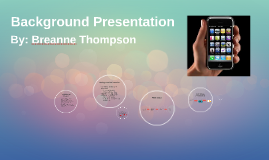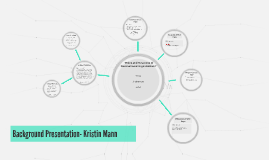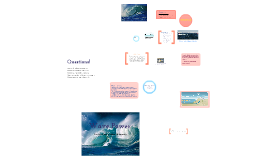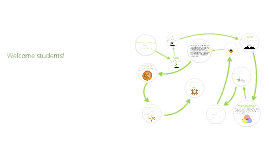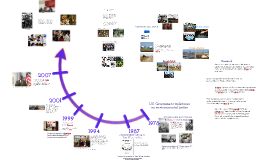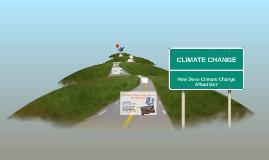Environmental Justice: Background Materials
Transcript: Environmental Justice What is it? The environmental justice or EJ movement and the environmental movement are distinct, yet overlapping struggles. The modern EJ movement has its roots in the intersection of the Civil Rights movement and the environmental movement. The EJ movement has since expanded to addressing the kinds of environmental inequalities being studied in areas such as transportation, health, housing, and smart growth/land use, water, energy development, brownfields, and militarization Studies of occupational exposures in the garment industry and in Silicon Valley factories staffed by Asian and Latino immigrant women workers, (Pellow and Park 2003) Native American communities imperiled by military wastes and hazards (Hooks and Smith 2004) Analyses of gender and the role of women as protagonists in environmental justice activism. (Allen (2003), Peeples and DeLuca (2006), and Di Chiro (1998) ) Youth environmental justice activism has also sparked a number of works that examine the issue of age/generation in environmental justice (Sze et al. 2005) Similarly, London (2007), Driskell (2002), and Chawla et al. (2005) describe the role of youth-led participatory action research in promoting youth voices and perspectives in the improvement and redesign of urban neighborhoods. U.S. Government milestones on environmental justice Recent research has broadened the scope: includes other racial and ethnic groups (e.g., Latinos, Asians, and Native Americans) and disparities associated with gender and age. Rosa Parks 2007 1978 Research http://www.fotopedia.com/items/flickr-2744600115 While Civil Rights activists were struggling for basic human rights... ... environmentalists were working to preserve wilderness areas. http://www.flickr.com/photos/molas/6153270082/ In its earliest incarnations, environmental justice research was concerned primarily with the toxic and hazardous waste impacts in low income and communities of color http://www.environmentalhealthnews.org/ehs/news/2012/pollution-poverty-people-of-color-day-9-qa-with-environmental-justice-pioneers Lois Gibbs and Love Canal http://www.flickr.com/photos/gregdonnaphotos/5075311721/ http://www.flickr.com/photos/usepagov/5621742089/ http://www.flickr.com/photos/arwcheek1/5770674227/ http://www.flickr.com/photos/arwcheek1/5770661033/in/photostream/ http://upload.wikimedia.org/wikipedia/commons/6/6d/Love_Canal_protest.jpg http://www.flickr.com/photos/cityprojectca/6801414202/ Land use and smart growth http://www.flickr.com/photos/rainforestactionnetwork/5762996896/in/photostream/ http://www.flickr.com/photos/rainforestactionnetwork/5637615773/in/photostream/ http://www.flickr.com/photos/31283743@N00/5636063948/in/photostream/ Energy development http://www.flickr.com/photos/uusc4all/6442860067/in/photostream/ http://www.flickr.com/photos/uusc4all/6442573217/in/photostream/ http://www.flickr.com/photos/uusc4all/6442291107/in/photostream/ Water issues http://www.flickr.com/photos/16782093@N03/3401790277/ http://www.flickr.com/photos/29714836@N08/2995851157/ Transportation http://www.flickr.com/photos/brooke_anderson/812998737/ http://www.environmentalhealthnews.org/ehs/news/2012/pollution-poverty-and-people-of-color-richmond-day-1 http://www.flickr.com/photos/cityprojectca/5484293157/in/photostream/ Brownfields http://www.flickr.com/photos/expertinfantry/5458327689/ http://www.flickr.com/photos/7552532@N07/6301801794/in/photostream/ Militarization Polychlorinated biphenyl (PCB), a dangerous chemical, was illegally dumped along North Carolina highways in 1978. When the dumping came to light, state officials selected the mostly Black community of Afton, Warren County, for a landfill to store the contaminated soil. This site did not meet EPA guidelines for hazardous waste landfills. Residents fought the landfill’s construction through legal action and protests. More than twenty years later, community members held the State to its promise to decontaminate the site. http://www.exchangeproject.unc.edu/documents/pdf/real-people/Afton%20summary%2007-0320%20for%20web.pdf http://www.exchangeproject.unc.edu/documents/pdf/real-people/Afton%20long%20story%2007-0426%20for%20web.pdf http://www.southernstudies.org/2009/09/voices-investigate-epas-treatment-of-black-communities-in-the-south.html http://news.ncdcr.gov/2012/09/10/highway-marker-commemorates-pcb-landfill-protests/ http://www.calpeacepower.org/0302/peopleandfull.htm Background material on Warren County NC Warren County, North Carolina - Birthplace of the E.J. Movement PCB Protest in Warren County 1982 1987 Original breakthrough report - Toxic Wastes and Race http://www.ucc.org/justice/pdfs/toxic20.pdf Background material on Toxic Waste and Race http://www.ucc.org/about-us/archives/pdfs/toxwrace87.pdf The study found a significant correlation between the number of commercial hazardous waste facilities in a zip code and the percentage of people of color in the zip code's population. 1994 Executive Order 12898 Federal







